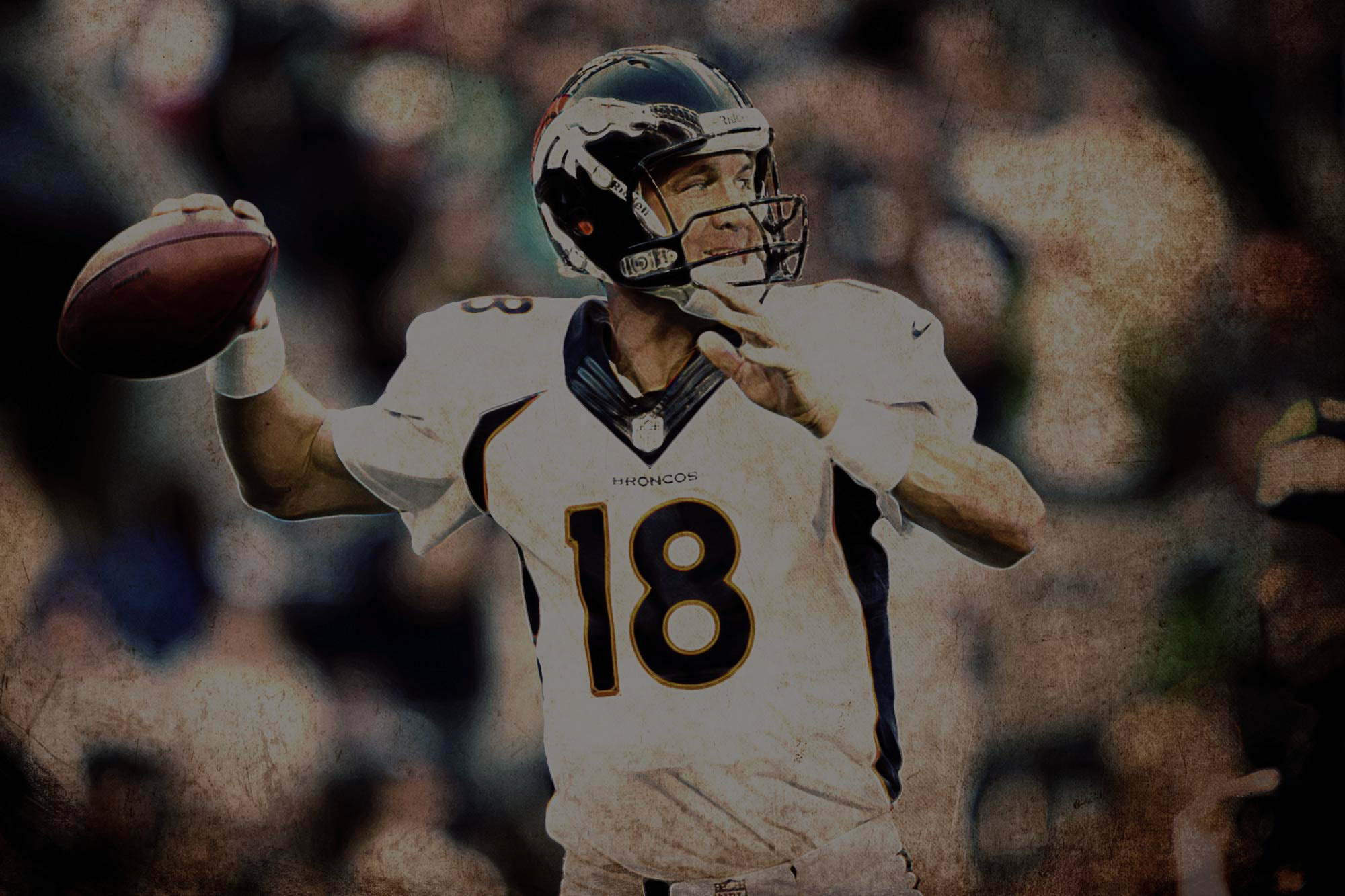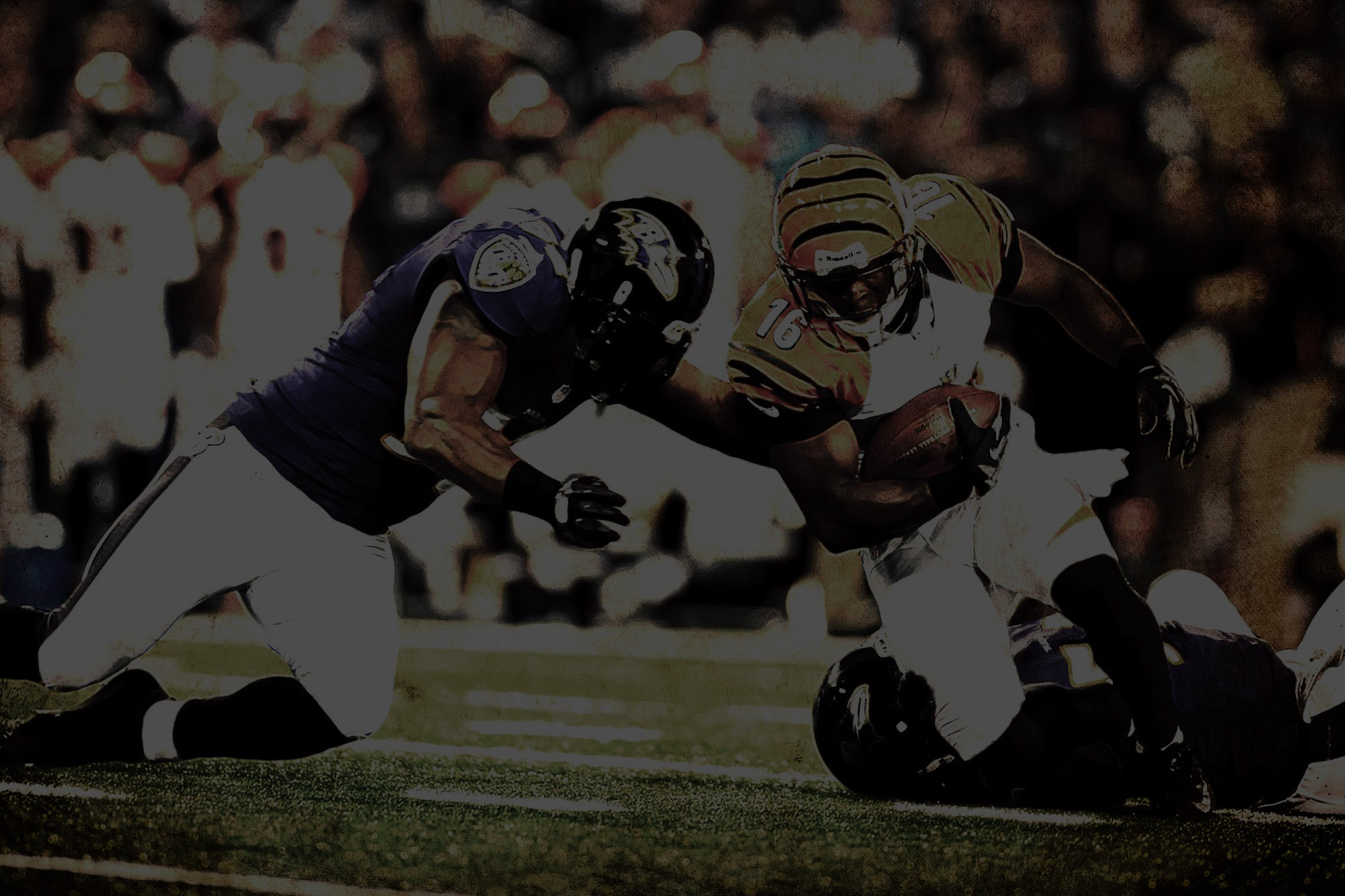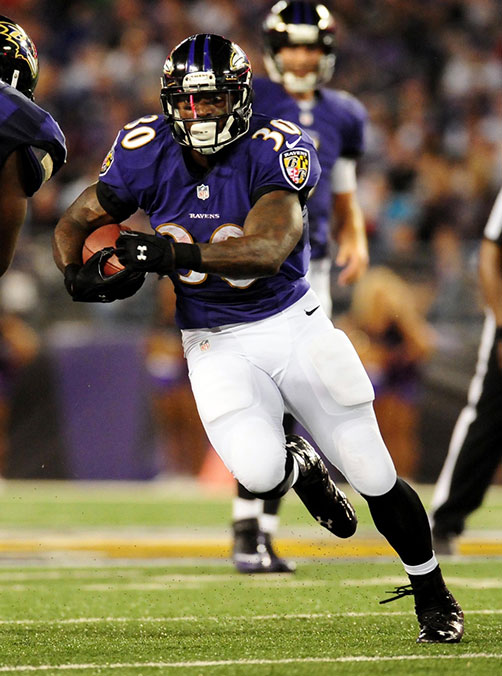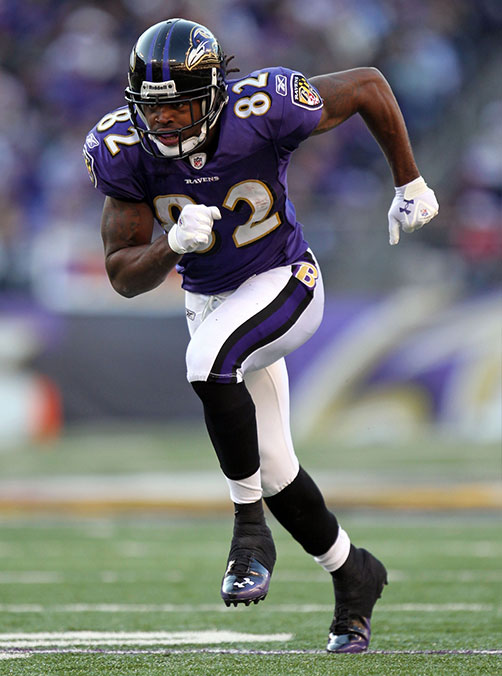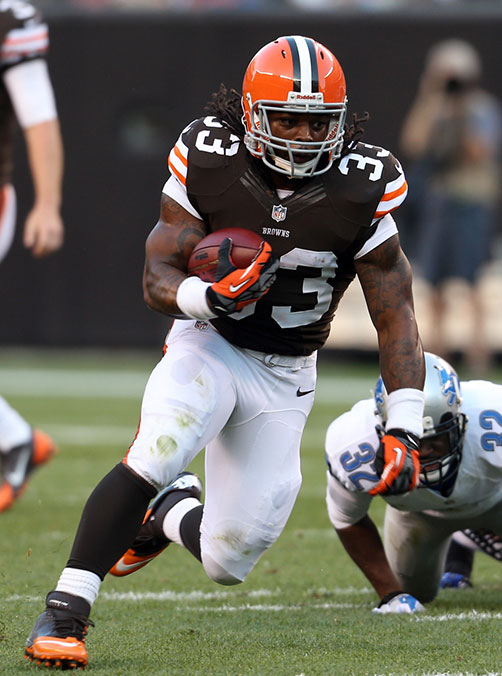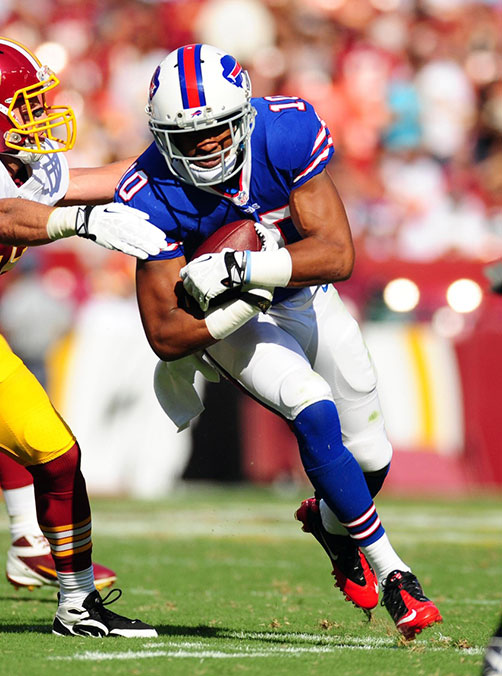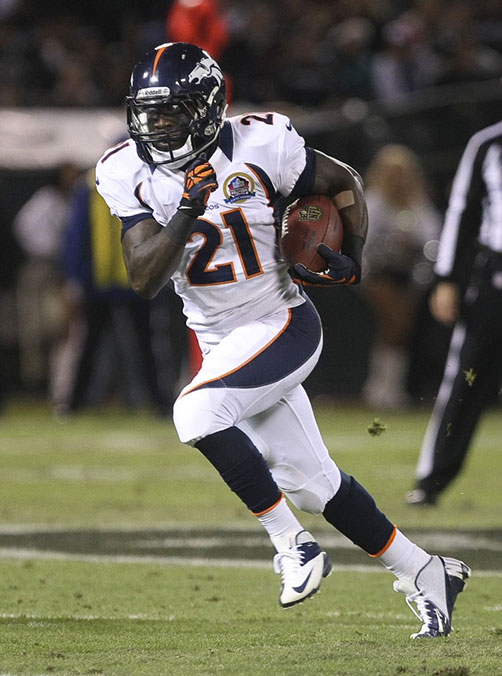The start of the National Underwater Hockey tournament has not gone exactly as planned for Cincinnati's Roger Bacon High School.
On Friday, the first day of the round-robin competition, the team lost their first game. They also lost their second and third games. They won their fourth - but it was against the JV team so it doesn't count. "I don't really want to talk about it," Coach Paul Wittekind said gruffly at the end of the day.
It was rough, yes. But Saturday is a new day.
"Today is a new day," says graduating senior Kevin Anneken, as he gets on the bus. His ginger red hair is combed forward, and it sits like a shelf over his blue eyes. As the captain of the team, Kevin spends the majority of the time trying to keep his teammates as fired up as he is.
Kevin walks toward the back of the bus, slapping hands with his teammates. Three of the girls: Sadie DiMuzio, Chrissy Ungruhe, and Lauren Krebs are already nestled in their seats, knees pressing against the seat in front of them, listening to their headphones.
At 14, Chrissy is the youngest player on the team. Her long brown hair is damp and down and flipped to the right, and she is mouthing the words to a Michael Jackson song. When it is over, she peeks her head over at Sadie, sitting in the seat behind her.
"They're, like, not going to let me play today because I'm nauseous and can't eat and they think I have a concussion or something," she complains.
How did you hit your head? Sadie asks.
"I don't remember."
"Isn't that a sign of a problem?"
Lauren, who is super-competitive and only has enough room in her head to consider her own mental anguish right now, still has not let go of yesterday's losses. "We should have at least won the first game," she moans, kicking her legs against the seat in front of her.
"We kind of lost energy and gave up too easily," Sadie muses.
The other members of the team stare down at the floor uneasily.
It is sort of an embarrassment, losing like this.
Underwater hockey is a co-ed sport that is similar to regular hockey except players wear snorkels and fins, the sticks are only about 12 inches long, and all the action takes place at the bottom of a pool 8 feet deep. To watch the game, spectators often don their own snorkels and fins and float along the side of the pool.
It’s played in 30 countries and five continents and there’s a World Championship every year.
The sport is a lot more popular than one would think. Really. It's played in 30 countries and five continents and there's a World Championship every year. The U.S. Nationals are a prelude to this year's championships in Hungary in August.
Roger Bacon, the only high school in the country to field an underwater hockey team, is a perennial favorite at the U.S. Nationals. They are fast and squirrely, and accustomed to going up against tough, older teams. Because there are no East Brunswick Bears or Solon Comets to play against in the states, the Spartans travel to Canada to play against other high school teams and fly to tournaments in California and Florida to play against college club teams. They pride themselves on their underwater, underdog status, feeding off the teams who derisively call them "Bacon Bits" and laugh at their skinny legs and walnut-sized biceps.
Twice, in 2010 and 2011, Bacon has beaten a majority of these teams, placing first in the B Division nationals. Last summer, nine of Bacon's players competed for the USA junior team in the invitational America's Cup, where they played against teams from Colombia and Canada. In March, the team finished third in the B Division of the University of Guelph tournament in Ontario, playing against mostly Canadian college teams.
"Roger Bacon has a really strong club," says Karen Erickson, the development director of U.S. Underwater Hockey. "They always put on a good show. Some really great players have come out of their system."
This year's nationals were supposed to act as a going away party of sorts for the graduating Spartans and Wittekind. Six of the team's varsity players received their diplomas a month ago, and are now in that weird, time-defying stage between high school and college where they are not yet adults, but no longer high schoolers. This tournament is the last time they will ever wear a Bacon uniform or serve under Wittekind's tightly-fisted tutelage. When the last buzzer sounds, they will officially be released from all Bacon responsibilities. So far, the tournament hasn't been the celebratory bash they'd planned for.
The team quiets down as Coach Wittekind, who is revered as a godfather of the sport, makes his way to the back of the bus wearing a Roger Bacon sweatshirt and Tevas, with two of his toes taped together, the result of too many unfortunate fin injuries.
As is custom, Wittekind starts the day by picking a team member to lead everyone in prayer. Today he chooses Steven Poptic, an incoming junior, whose highlighted blond hair spills over his left eye.
Poptic groans softly, then invokes the name of the Father, the Son and the Holy Spirit, makes the sign of the cross, and begins:
"Yesterday was rough," he says. "I hope we have a little bit better day today. And that we win at least one game."
"And have no injuries," Wittekind interjects.
"And have no injuries," Poptic adds.
"Mary, Queen of Victory," he concludes.
"Pray for us," the team responds.
In the front of the bus, Wittekind settles into his seat, staring at his clipboard.
"What do we know about the teams we're playing today?" he is asked.
"They're all really good," Wittekind sighs. Mary, Queen of Victory, has her work cut out for her.
* * *
Cincinnati is a highly divided city, defined by its transplant-heavy east side and its old world-leaning west side loyalties. Vine Street bisects these two quadrants, and Roger Bacon High School proudly sits right in the center of it.
The small, 400 person Catholic school prides itself on its affordability (tuition costs $8,000 a year with lots of financial aid available), its 85-year-old Franciscan tradition and its close-knit relationships between students and teachers.
When Paul Wittekind started teaching at the school in 1994, he was required to sit through the obligatory new staff interview by the school newspaper. At the end of it, the reporter asked: "Do you have any hobbies?"
There was any number of things Wittekind could have said then: he was a U.S. diplomacy geek, he jogged occasionally, he played the trombone.
But instead, Wittekind, a Bacon alum himself, replied with the words that would come to define his next 20 years: "I play underwater hockey."
Wittekind, a then-Ph.D. candidate, with a slightly protruding belly, an overgrown buzz cut and round professorial glasses, had started playing the sport at Ohio State University while working on his doctorate degree. At 29, he was still hooked on the sport, traveling two hours back to Columbus most weekends to practice with the team.
When the story came out, underwater hockey was all the students could talk about. They wanted to know where it started (in England in the 1950s), how it was played (with snorkels and fins), where it was played (mostly at colleges). And then they wanted to know if he could start at team at Bacon.
Wittekind, who had grown tired of commuting to Columbus each weekend, agreed. "I thought this will give me back a lot of my time. That was the biggest mis-statement of the century," he says laughing a laugh that sounds a little like a painful cough.
"If you want to play underwater hockey, this is the only high school in the country that offers it."
![7781502292_acff9894bb_k_medium]() Coach Paul Wittekind
Coach Paul WittekindWittekind, who everyone calls Doc on account of his doctorate in U.S. History, is not just the team coach. He is also the team dad, the older brother, the event organizer, recruiter, the head fundraiser and the athletic trainer. He schedules games with other schools, books hotels, buys the snacks, and competes as a substitute on the JV team. "There would not be underwater hockey at Bacon if not for Doc," Chris Krebs, Lauren's mother, says firmly.
With over a dozen Catholic high schools in Cincinnati competing for students, and Bacon's numbers down 50 percent from 10 years ago, underwater hockey is one of the school's biggest recruiting tools. "If you want to play underwater hockey, this is the only high school in the country that offers it," says Steve Anneken, Kevin's father. The school helps support summer camps and clinics to introduce Cincinnatians to underwater hockey, with the hope that the sport might be the final enticement a parent or student needs to commit to the school.
This is a lot of responsibility, weight and guilt to carry on a 47-year-old history teacher, even one who's back has been strengthened by thousands of pool laps.
* * *
Like Wittekind, Alan Blake, the inventor of underwater hockey, did not know what he was getting into when he started the sport. Back in 1954, all Blake, a recreational scuba diver, wanted to do was keep his new diving club from falling apart during the winter, when outdoor dives were not practical.
He thought up a number of ideas to keep his teammates engaged, but discarded all of them because they were "too rough or violent, too much equipment, uncontrollable, impractical, expensive, damage to the player or the swimming pool" as he wrote in his self-published memoirs.
And then, one night, the idea for underwater hockey came to him, as if in a dream.
The concept, as he described it to his teammates over tea, was simple: The object of the game was for the six players on a team to move a "squid" (a three-pound lead weight) along the bottom of the pool with the aid of a "pusher" (a short, shuffleboard-like stick) against the opposing team, with the goal of hitting the puck into a two-meter goal. Instead of wearing full scuba gear, players would only wear a mask and flippers and periodically surface to breathe, making breath management an important part of the sport.
At the start of the game, each team would line up at opposite ends of the pool with the squid placed midway between the teams. At the buzzer, the teams would swim out to the puck, diving underwater to reach it. The first player to the puck would either propel it forward with their stick or flick it to a teammate. There would be penalties for, among other things, holding onto another player's mask or fin and striking another player with the stick.
Blake's teammates fully embraced the game, which premiered at the Portsmouth Guildhall Baths in the winter of 1954. From there, underwater hockey gained surprising traction. Exhibition games were held all around England. By the 1970s, the UK had an official national team, and played other national teams from South Africa, Zimbabwe, France and the Netherlands and club teams from Ireland and the Netherlands.
It took America a bit longer to catch hold of the sport. The first recorded U.S. National Tournament took place in 1976, and spread slowly to other cities from there. Today there are currently 60 American club teams, composed of players who mostly took up the game in college. The players take the sport as seriously as they would a game of football. There are weekly practices and tryouts and rivalries. Each year, the United States fields a national team to compete in the World Championships.
In America, the sport is run under the jurisdiction of the Underwater Society of America (USOA), a 64-year-old organization that represents all diving sports in North America - including activities like underwater rugby and photo fishing, an actual competition among divers to see who takes the best photographs. The USOA would like to add two or three new underwater hockey clubs a year, and start kids playing at a younger age. But they keep running into issues like pool availability and lawsuit concerns. "The sad thing," says Karen Erickson, the sport's development director, "is that swimming and synchronized swimming and water polo are prioritized over underwater hockey."
"Pool directors are nervous about the underwater breath holding part," adds Brigit Grimm, the U.S. women's coach. "They think there will be all kinds of liability if someone drowns - but no one has ever drowned at an underwater hockey game."
Each summer, the U.S. Nationals take place in a different city and the competition differs from championships in many other sports. For instance, teams do not need to qualify in order to play. They need only to consist of U.S. Citizens - though foreigners are allowed if they show proof of temporary residence - to belong to the Underwater Society of America and register before the deadline.
At this year's 2013 competition, there are 21 teams competing from as far away as San Francisco and Gainesville, Fla. Early favorites are Washington, D.C. and Los Angeles, and the two teams spend a lot of time glaring at each other.
Roger Bacon has their own rival too: Michigan State. "They're just jerks," Sadie explains. "They're rude. I don't know why. They just don't like us. I think it kind of makes themselves feel better to go after a high school team for some reason."
It's as if the longstanding Ohio State-University of Michigan rivalry has spilled over to representatives of their respective states, even under the water.
* * *
On the second day of nationals, the team pulls up in front of the Walter Schroeder Aquatic Center in Brown Deer, a suburb outside of Milwaukee. All around the aquatic hall, hundreds of players smashed into small Speedos are lounging on bleachers or walking on the sidelines in their fins, their feet swishing across the pool deck like cross-country skiers as they make their way to and back from the pool. A few players are checking out the wares at the CanAm underwater hockey store, which is selling things like specialized $130 neon-colored, fiberglass flippers that promise to maximize your underwater thrusting power, and a $75 black face diving mask that will both increase your underwater field of vision and make you look like Darth Vader. As a favor, this year CanAm is also selling a calendar filled with images of female Czech underwater players posing nude underwater. "It's for a fundraiser," Steven Kars, CanAm's owner explains.
Walking quickly out of the locker room in her black swimsuit, Sadie, dandelion thin with an open face and faded blue eyes, is one of the first Bacon players out to the pool. From her bag, she pulls on her protective ear gear, with side padding that makes her look like a bulgy-eyed fish. She dips her mask in the water to clear it out, then she slips on a pair of bright green bobby socks that she wears underneath her fins, to prevent chafing. She pikes her finned feet in front of her, mermaid like, then eases herself into the pool.
For Sadie, who grew up swimming and snorkeling in her parents' pool, underwater hockey feels as natural as holding a fork. Most nights, she can be found, belly-side down on the floor in front of the TV, running figure eights with her stick, until her parents can't take the sound anymore and tell her to go practice in her room.
"I just like being in the water," Sadie shrugs. "Out-of-water sports just take so much effort and you sweat and get hot, but swimming for me just feels pretty easy."
Sadie also likes that the sport is co-ed. She played all-girls volleyball in middle school and she hated all the drama and nitpicking and talk about things other than the game. The dynamics of underwater hockey are different, she says. "It's not, like, limited to girls so the conversations are more diverse," she says. "Also, there are not too many co-ed sports you can play, so that's cool, too."
At the end of the summer, Sadie will enter the University of Cincinnati to study electrical engineering. "I like math and science and puzzles and figuring out how things work," she explains. Sadie will also be one of only a few girls in her major at Cincinnati - a fact that also doesn't bother her. "I knew when I picked it, that there would be mostly guys, but I don't care. It's not a big deal with me. I just kind of get along well with most people and don't need to have a best friend in my major or anything," she explains.
* * *
The Spartans first afternoon game is against The Sturgeon Bay Sturgeons, from Sturgeon Bay, Wisc. The Sturgeons, a new team made up of mostly post-collegiate players and novices, are huddled together under a larger than life plastic model of a sturgeon that they've strung up on the bleachers. Like Bacon, they lost most of their games yesterday and are looking for retribution today.
Asked about predictions for the game, Sturgeon Amy Ensign, 44-years-old, looks up from her stretching. "One of our team members reffed their first game yesterday and was really impressed with their level of stick skills," she says. "As 18-year-olds, they have much better lung capacity than we do."
"I think if we do have an advantage it's that we have more life experience and we see the big picture more," she allows, adding that: "I think they're going to give us a run for our money."
Told that Sturgeon Bay is a little worried about the game, Kevin nods his head curtly. "Good, they should be," he says.
* * *
From the sidelines, it looks like you are watching a shark tank.
![Waterhockey_medium]()
A few minutes before the game begins, the Spartans line up at the edge of the pool, their sticks pointing forward as if inviting a duel. When the bell sounds, their muscular legs kick like bat wings, and they leave a crescendo of waves behind them. They swim out to the center of the pool, then dive down head first. From the sidelines, it looks like you are watching a shark tank. "We call the sport ‘Fins and Butts' because that's all we can see," says Kevin's father Steve, who's been to dozens of games over the years.
In the first minute, the Sturgeons reach the puck first. Bacon players race back to defend their own goal, but they are not back in time, and the Sturgeons easily sweep the puck into the goal. Sadie, angry at her playing, screams underwater, making a gurgling sound that sounds like a dying animal. Both teams head back to their respective walls, waiting for the puck to drop again.
"You need to support each other better," Coach Wittekind calls out.
The buzzer sounds, and again the two teams converge on the puck, their bodies slanting like descending airplanes as they fight for control. The Sturgeons find a seam, scooping the puck toward an open forward. As they descend on Bacon's goal, Kevin hangs back to defend it. He deflects the puck, sending it up field, but then has to float up to the surface for air. Before he gets back down, the Sturgeons score again, and the crowd responds.
"It's OK. Roger Bacon."
"Just put one in."
After 11 minutes, the team switches sides. Roger Bacon gulps down swishes of water and receives last-minute advice. The refueling seems to work. A few minutes into the second half, Lauren, a strong, powerful swimmer, pushes past a pack of Sturgeon players, and keeps control of the puck. She passes it to Kevin, who slams it into the Sturgeons' goal.
3-1.
The next few minutes are a tense tug of war for possession, with the puck ricocheting off the side wall of the pool. Then the Sturgeons get the puck again and converge on the goal. Lauren, Sadie and Poptic all race backwards to play defense. Sadie blocks a shot, but it is intercepted by another Sturgeon player. There is a mad rush to protect the Spartans' goal, but the puck slips in.
4-1.
The game ends soon after. The Sturgeons congratulate each other, then lead Bacon in the ritualistic cheer, performed after every game. "Three cheers for Roger Bacon. Hip hip hooray. Hip hip hooray. Hip hip hooray."
The team is glum at the loss, except for Kevin, who says, "I think we went out much better today than yesterday. We're looking strong, I think."
* * *
You could be confused for thinking that the lawn outside of Walter Schroeder Auditorium is actually a Florida beachfront. Players spread beach towels on the grass, slap on sunscreen and bask in the sun. There are coolers of Gatorade, and bright umbrellas sticking like flowers out of the ground. Some players have unfolded beach lounging chairs, and read novels in between games. The only thing missing from the whole scene is the water.
In between games, Sadie and Chrissy drag their own towels outside. The two represent opposite ends of Bacon's legacy: Chrissy is about to enter Bacon, and Sadie is about to leave it. When Sadie, Lauren, Rebecca, Liz and Michelle graduate, Chrissy and another sophomore named Shelby will be the only girls on the team. This is worrisome for Chrissy. In fact, most things about next year are worrisome for Chrissy, whose entire family lineage, it seems, has graduated from Bacon.
"I'm worried," Chrissy confides, as she lays on her stomach. "In elementary school, I wasn't shy at all. I wasn't awkward. I was, like, really talkative and friends with everyone. But now I'm all awkward and say stupid things."
"You're not even in high school yet," Sadie points out.
"But I'm going to be next year."
"We're friends," says Sadie.
"Yeah, but you won't be there," Chrissy replies, peeling a piece of grass like string cheese. "I'm going to get my friend Rachel to join. I'm going to make her pay the dues when I get back. She wants to join drama, which is fine too, but no matter what, she's joining. She's awkward like me. We're thick as thieves, even though I've only known her for like 10 minutes."
"They are kind of like the future. If they don’t play it, no one’s going to play it."
She sighs. Sadie makes clucking, comforting noises. Though the two are very different, Sadie has made it her role to take Chrissy under her wing this tournament. "I like trying to help the younger freshman in any way I can," she says later. "They are kind of like the future. If they don't play it, no one's going to play it."
The U.S. Underwater Hockey Association is well aware of this. "Look around," says Grimm, the U.S. women's underwater hockey coach. "There are not many women here. We want the women who are here to feel like a community."
What makes it possible for both men and women to play the sport is the water. "It's the great equalizer," says Grimm, who was a competitive swimmer at UCLA in the '70s.
"And the thing about underwater hockey is that every player has to come up for air at some point," adds Erickson, the development director.
But a lot of the more competitive leagues do not have female players. The Cincinnati team, which this year features all Roger Bacon alumni, has no women and their swimsuits read "Big Daddies from Cincinnati." Which is not to say that next year, they couldn't include women.
"If Sadie and Lauren tried out, they would definitely make the team," says Alex Mathis, who graduated from Roger Bacon last year and is now playing for Team Cincinnati.
To keep players like Sadie and Lauren, Brigit invited the girls to play in a makeshift all-female game at the tournament. Sadie didn't particularly like it. Not because it was all women, but because she didn't know her teammates. "Basically, you didn't know exactly what people were good or capable of," she explains. "At Bacon, I pretty much knew what my team could do. In this game, I didn't know if my teammate was going to barge through the other players or try to steal the puck. I just didn't know anything about them. It was frustrating."
* * *
Chrissy is not the only player having problems with transitions. Before the next game, Kevin and Bacon alum Alex Mathis sit on the bleachers having a heart-to-heart conversation about legacies with a reporter.
"This is like the last thing I get to do for Bacon before I leave for college," says Kevin, as he gnaws into a granola bar. "Next year, I'm graduating to the big boy leagues, and playing with all the big dogs who've been around for a while. It'll be weird. At least with Bacon, all the other teams are impressed with us - even when we get blown out."
"It's different," Alex agrees. "Everything's a lot less organized now. When I was at Bacon, Doc took care of all of us. We always had a bus to go back to and all the food we wanted. Now [with Team Cincinnati] it's more hodge-podge. Like, I don't know where we're eating tonight, and you probably know where you're going to eat for the next six nights."
"Yes, Family Table," laughs Kevin who has already memorized the restaurant's five-page menu.
"The big difference is that now we're playing at a higher level. And it's a lot more social," says Alex. "When I was at Bacon, Doc would whisk us away in the bus after every game to a different hotel than anyone else was staying at. Now it's all about drinking. Half our team was like we have a really big game against L.A. at 9 a.m. this morning and the other half rolled in from the Ale House at three in the morning. On a game day!"
* * *
The one thing that still unites all the Roger Bacon players - current and alumni - is an intense hatred of Michigan State. Every team has their rivals, and for Bacon, Michigan State is the enemy. They dislike most everything about them - from their sparkly, bottle-green bathing suits to the funny way they stretch out their "O's" when talking, to the showy, obnoxious way that some of the girls straddle the judging ref's lap during games.
Like a lot of enemies, Bacon hates the team partly because they are a lot like them.
"Geographically, they are one of the closest teams to us," Wittekind explains. "Like us, every four years they have to replace their team and struggle with attrition issues like we do. They struggle to get respect and pool time. In terms of totem pole, they're not the biggest or most influential [school]."
But there is more than just geographical distaste that keeps the teams fighting. There’s also genuine bad blood.
![9302010547_2c98d6bf48_k_medium]()
But there is more than just geographical distaste that keeps the teams fighting. There's also genuine bad blood. Two years ago, at the U.S. Nationals in L.A., Bacon had two recent graduates playing on their team. Michigan State found this unfair, and complained to the refs and tournament organizers. "As parents, watching, we kind of found this humorous," says Kevin's father Steve.. "We're like "OK, you're all college aged or older and we have two guys who graduated a few years ago playing and you're complaining?'" At the end of the national championship game, where Michigan State lost to Bacon, a few of their players chanted: "Hip hip hooray, f***ing Cincinnati, Hip hip f****ing Cincinnati."
The parents and players were furious. "As a parent, I was like, ‘Are these guys serious?' They just played kids aged 14 to17, and they're all bent out of shape?" Steven Anneken says, shaking his head in disbelief.
The Bacon-Michigan State game is the last one of the night. In the standings, the outcome doesn't mean much. Both teams are tired, and both are disappointed in their playing. No matter the outcome of this game, both teams have already been delegated to C level, the lowest division, for the finals tomorrow.
Nonetheless, Kevin remains the relentless optimist. "We've got to trust each other," he tells his teammates during warm ups, as the University of Cincinnati team gathers to watch. "We've got to get down quickly."
Michigan State shoots out quicker than anticipated. They score within the first minute.
"Guys," Kevin says, "We've got to be cycling better. Let's get our heads in the game."
Right after the second puck drop, Michigan State scores again.
Kevin is starting to get angry. "Steven!" he yells. "You have to play further back."
Unaccustomed to the outburst, Poptic looks wounded.
"It's OK, Steven," Wittekind consoles.
"C'mon. Push it!" The audience members shout from the side, as if their cheers could physically propel Bacon forward. But all the cheering is for naught. Bacon is unorganized. They're tired. They don't swim out strong. They're not playing aggressively. They give up when they lose the puck. And the goals keep coming. At the half, the game is 6-0.
On the sidelines, Kevin pleads with his players to get into the game. "Try your hardest," he practically begs.
The second half goes much better for Bacon. They are more aggressive. They use the wall more. Kevin gets a breakaway, and he scores. Bacon manages to keep the puck on the Michigan State side for much of the game - but then they lose control. Then Bacon regains momentum, passing the puck down the pool, and throwing it into the goal.
Final score: 7-1.
On the bus on the way to Family Table, Kevin leads the team pep talk. "Guys!," he says. "I think is the toughest competition we've faced in any tournament. But, you know, people in the shower stopped to compliment me."
"On what?" team members call out, snickering.
Kevin chooses to ignore this. "Even though the scores don't look like it, we really stepped things up today," he says. "Look at the Michigan State game. If you only take our second half scores, then we were tied. That means we can be just as good as them!"
On Sunday morning, the team pulls into the parking lot of St. Catherine of Alexandria Church and pile out. At every tournament the team goes to Mass. Sometimes, in order to jive with their schedule, this means that they go to a Mass completely in Spanish. Once they pulled into a church, and found out it was the cemetery where Bob Hope was buried. It had a full-time security guard watching Bob Hope's grave, Kevin explained exuberantly.
Today, they file off the bus, walking up the cobblestone stairs, to the pews inside the church. The priest, a kindly man, asks the team what they are doing in Milwaukee. "Underwater hockey," they explain.
"Oh," the priest says, nodding, as if he's heard this before, like they said they drink water in the morning or brush their teeth.
At 8:30 a.m. he welcomes the congregation, "I want to especially welcome the team from Cincinnati who are here playing underground hockey."
"Underwater hockey," they yell.
"Either way," he says. "I hope you win today."
As the priest ends the Mass, he says: "Good luck with your underwater volleyball."
"Underwater hockey," they yell back.
Walking out, Kevin says to Brother Roger, an assistant coach and priest-in-training: "Is it me or did the wine have a higher concentration of alcohol than normal?"
At 10 a.m., the team walks into the Walter Schroeder Aquatic Center, which smells like chlorine and feet.
Their first game of the day: Bacon vs. Bacon. "Well, at least Bacon will win," says Steven Anneken helpfully.
As expected, the varsity wins - which means they get a rematch with Michigan State.
At the start of today's game Michigan State seems optimistic - some might say cocky.
Warming up, the captain says to his team: "When we win this game, we can get first place. We never get first place."
"There is no next game for us," he tells the team. "This is it."
![Waterhockey2_medium]()
Kevin, hearing of this, is furious and fired up, and trying to pass these feelings off like a cold.
"There is no next game for us," he tells the team. "This is it. We have to get out early. We have to go out as fast as we can. We have to ... I can't think of what I was going to say. We have to want this. Go Spartans!"
At the wall, the team holds out their sticks like knives, inviting a batlle. When the bell rings, they push off the wall, their powerful legs creating ocean waves. Their fins disappear under like dolphin tails as their fans cheer them on.
Come on Bacon, keep pushing!
Kevin sprints out toward the goal, then circles back but has to catch his breath. As he bursts out of the water for air, a member of the other team, spots an opening, and nails it in.
1-0.
It's all right, Kevin.
Lauren consoles her team: "It's one point, that's it." Sadie on the sideline is shaking with exertion and lack of breath.
Drive! Drive!
Michigan State hits Poptic's stick instead of the puck. Stick foul! the refs call. Bacon gets possession. The Michigan State players must stay back two meters until Poptic touches the puck.
Come on guys! Push one in!
Poptic slams the puck to the left corner. There's no one there to meet it.
Wittekind rubs his temples. "If someone's making a run, you've got to be there," he shouts. Kevin circles back, eel-like, and rushes to protect Bacon's goal. He blocks a shot. A Michigan State player swishes in, and aims the puck at the center of the goal.
2-0.
With two minutes left in the half, Kevin makes a breakaway, his long body like an arrow aiming toward the goal. He walks it in. 3-1.
Michigan State roars back, converging on the puck like a swarm of bees. They elbow and man and push their way to the goal, through force. Bacon's defense breaks up, and they score.
At half time its 4-1
Push it! Here we go!
Quickly, Michigan State makes another surge. There's no one to cover. Sadie makes a desperate attempt to catch up, but fails. The goal goes in.
As they pop up for breath, Michigan State's No. 10 snarls at one of Bacon's sophomores: "Lay off my tail. Get the f*** off of me."
A stick foul is called on Bacon. No. 10 smiles, and Lauren restrains herself from tackling the girl. The puck is slammed close to the goal, but Sadie intercepts it. She curves herself around, C-like, switching direction - but there is no one to pass it to. Michigan State takes it and walks it into the goal.
On the sideline, Sadie takes out her mouth piece and sighs. Lauren shakes her head, like she's trying to knock out bad thoughts. Kevin slams his stick against the wall.
"Way to have a temper tantrum," No. 10 mocks.
Kevin explodes at his teammates. "You've got to be down there. There's no excuse for that. We need two backs down at all times. We're giving up easy points."
Doc shakes his head.
Two minutes. "Let's go all out!" he shouts.
And now the game is no longer against Michigan State, but for themselves. For the legacy. For their last minutes as Roger Bacon players. They just want to score. To get the puck to the opposite side. They are pushing hard. Lauren's strokes are like punches. Sadie swims with her elbow bent like an archers. Kevin's arms reach as if he could will himself forward.
Together, they surge. They pass the puck, using the wall like a pinball machine edge, as they advance down the pool. Everyone is down in Michigan State's territory now, waiting for the pass that will let them walk the goal in. Kevin takes the puck and aims ...
And then time runs out. The buzzer sounds and the game is over.
Kevin, ever the captain, ever the cheerleader, starts the cheer.
Three cheers for Michigan State. Hip hip hooray. Hip hip hooray. Hip hip hooray.
No. 10 refuses to shake hands. "I should have kicked them in the face. Bunch of little punks," she murmurs.
Lauren, walking with the assistant coach Brother Roger after the game, shakes her head. "I don't understand. They won. What the hell?"
Brother Roger responds, "It's good you took the high road."
Lauren, bleeding from the heel, looks unconvinced.
Wittekind, looking at the sloped back and shoulders of his dejected players, tells a reporter, "I take back what I said in the beginning of the game," he said, referencing an earlier conversation in regard to the Michigan State team. "They called my kids little punks. Say whatever you want about them."
* * *
Before the day ends, Bacon Varsity will play one more game against a team from Pittsburgh and they will once again lose. They will, however, walk away with a consolation prize: an entire carton of Chips Ahoy! cookies, which they win for being the most organized team in the whole tournament. "We got the Chips Ahoy!, guys. We got the Chips Ahoy!," Kevin will shout joyously, tossing around packets of the cookies like confetti.
In a month Kevin will head off to the University of South Carolina where he hopes to start the school's first underwater hockey club, Sadie will move into her new dorm at the University of Cincinnati, and Lauren will start at The University of Indianapolis, where she will major in exercise science. Doc will start the process of rebuilding and rebranding the team, running clinics and convincing students in his U.S. history classes to take a chance on underwater hockey.
But for now, they will sit together on the bus one last time, munching on chocolate chip cookies, and talk about what they're going to order from the five-page menu at Family Table.



 Dick Trickle in 2002, his last season.
Dick Trickle in 2002, his last season.
 Kenny Wallace, one of Dick Trickle's closest friends.
Kenny Wallace, one of Dick Trickle's closest friends.





 Getty Images
Getty Images
 Clay Kreiner on the mini-mega ramp.
Clay Kreiner on the mini-mega ramp.



 Clay on the halfpipe inside Cloud 9.
Clay on the halfpipe inside Cloud 9.



 Billy Dillon in 1981 at age 21. (Courtesy of Billy Dillon)
Billy Dillon in 1981 at age 21. (Courtesy of Billy Dillon)

















 (Getty Images)
(Getty Images)



 (Credit: Getty Images)
(Credit: Getty Images) (Credit: YouTube)
(Credit: YouTube) (Credit: Getty Images)
(Credit: Getty Images)


 (Credit: Getty Images)
(Credit: Getty Images) (Credit: YouTube)
(Credit: YouTube)

















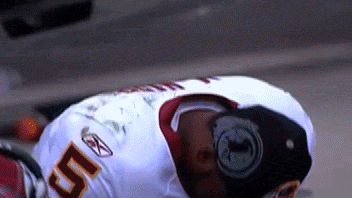

 Jeff Kopp (Courtesy of Jacksonville Jaguars)
Jeff Kopp (Courtesy of Jacksonville Jaguars) (Courtesy of Jacksonville Jaguars)
(Courtesy of Jacksonville Jaguars) Kopp's son's Pop Warner helmet (left); Kopp's NFL helmet from 1988.
Kopp's son's Pop Warner helmet (left); Kopp's NFL helmet from 1988.





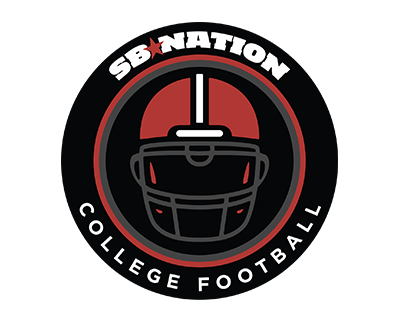









































































 (USA Today Images)
(USA Today Images) (Getty Images)
(Getty Images) (Getty Images)
(Getty Images) (Getty Images)
(Getty Images) (Getty Images)
(Getty Images) (USA Today Images)
(USA Today Images) (Getty Images)
(Getty Images)
 Getty Images
Getty Images USA Today Images
USA Today Images Getty Images
Getty Images
 Photo by Sam Riches
Photo by Sam Riches Photo by Sam Riches
Photo by Sam Riches Dennis Johnson, right, and Lawrence Garriques; photo by Sam Riches
Dennis Johnson, right, and Lawrence Garriques; photo by Sam Riches The outdoor training track at UTECH; photo by Sam Riches
The outdoor training track at UTECH; photo by Sam Riches
 Getty Images
Getty Images Getty Images
Getty Images Ron Shapiro
Ron Shapiro
 Otties William Brewer III, courtesy of the Brewer family
Otties William Brewer III, courtesy of the Brewer family Courtesy of the Choctaw Sun-Advocate
Courtesy of the Choctaw Sun-Advocate Courtesy of the Choctaw Sun-Advocate
Courtesy of the Choctaw Sun-Advocate Courtesy of the Choctaw Sun-Advocate
Courtesy of the Choctaw Sun-Advocate
